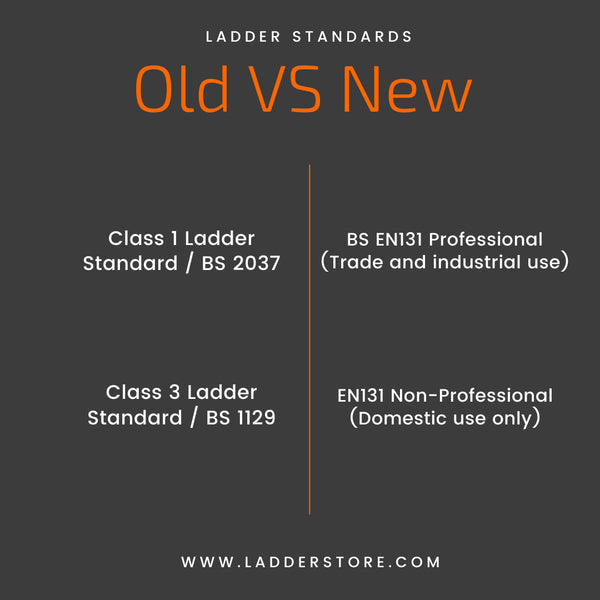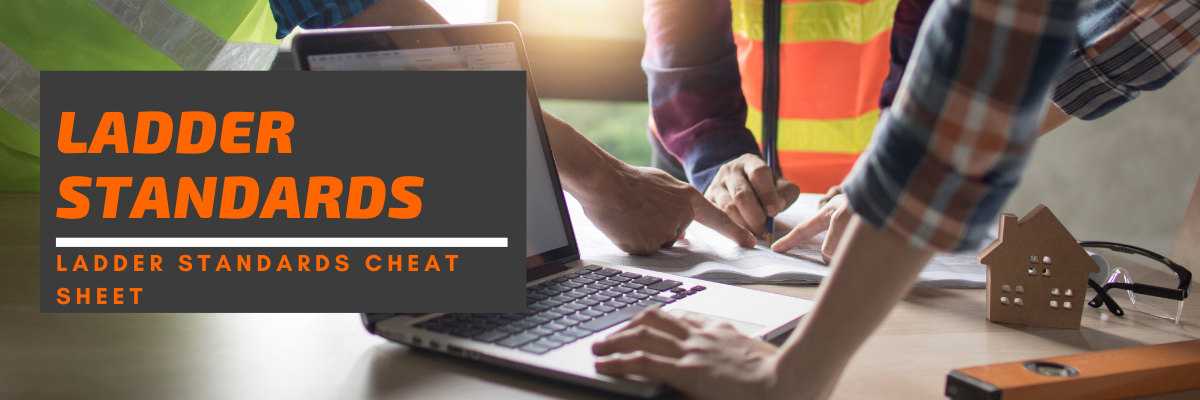| Classification: EN131 Professional / EN131 Non-Professional | |
| Telescopic Ladders | Classification: EN131-6 |
| Portable Roof Ladders | Classification: - BS 8634 – Portable roof ladders |
| Hop Ups | Classification: No Classification |
| Warehouse Steps | Classification: BS EN131-7 / No Classification |
| Loft Ladders | Classification: EN 14975 / No Classification |
| Mobile Towers | Classification: EN 1004 |
| Podium Steps | Classification: BS 8620 |
As you may be aware ladder standards changed in 2019 for portable ladders and steps, with the introduction of EN131 Professional and Non-Professional, however, there is still confusion over the standards across our ranges. We often get customers asking for an EN131 Podium or Warehouse Step, which suggests there is still confusion when it comes to standards. This cheat sheet aims to help with this and gives you information on which standards to look out for when purchasing various categories of steps.
We’ll first start from the beginning, explaining what ladder standards are and explaining why they are important before discussing portable ladders, warehouse steps, loft ladders, podiums & towers.
What is a ladder standard?
Ladder standards are a collection of agreed-upon specifications that influence how a product is designed, manufactured, and used. Ladder standards are established to make ladders safer and keep the end user safe. Ladder standards are typically created by the governing body which understands how the products should be used and can be improved from a safety perspective.
Why are ladder standards important?
Ladder standards are important as certified products offer maximum safety and comfort to an end user when working at height, preventing falls and injury. Unfortunately, accidents still do occur when using certified products, however, this is typically down to user error, which suggests how important competency and training are.
Ladder standards in part can also help when selecting the right equipment for the job. For example, in the case of a portable ladder, a domestic ladder certified to EN131 Non-Professional could be the perfect choice for changing lightbulbs or for a spot of decorating on an infrequent basis, however heavier use and in all businesses EN131 Professional is the only ladder standard that should be used for portable ladders.
When purchasing a ladder to a standard be sure to purchase from a reputable retailer and if unsure request the testing certificate. All ladders that are certified go through rigorous testing to ensure they pass the requirements.
EN131 Changes of 2018
As we mentioned above, standards for portable ladders ie step ladders, extension ladders, telescopic ladders ect have recently been changed. In previous years (before the change) there were three standards of portable ladders. These were Class 3, for domestic use, EN131 for trade and professional use and Class 1 for industrial use. From 2018 Class 1 for portable ladders has been withdrawn and there are now two standards, EN131 Non-Professional & EN131 Professional.

What does it mean to have a ladder tested to the EN131 standard?
If your ladder has been tested to BS EN131, it means it complies with the British portable ladder standard. The EN131 standard improves ladder safety by making them wider, stronger (up to a weight limit of 150kg), and sturdier, with new stabiliser bars at the base, if the ladder is longer than 3m.
For more detail on what EN131 entails check out our blog post; Are you puzzled by EN131. Below we will continue this article by looking at the different product categories on our website and what standard you should purchase too.
Talk With One of Our Ladder Experts
At Ladderstore, we have a team of ladder training and qualified staff who can advise you on the best ladders for the job. We strive to provide the safest product for the task at hand, which includes ensuring that all the products we supply are certified to the most recent standards, and we can even quote for bespoke solutions for those more unique queries.
Give one of our team a call on 01204 590 232 to learn more or contact us with your working at height concerns, and one of our team members will respond with the ideal working at height solution.

